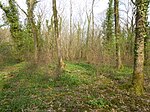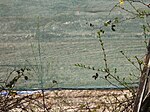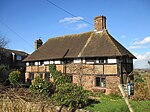Woods Mill
Sussex Wildlife Trust

Woods Mill is a 19-hectare (47-acre) nature reserve south of Henfield in West Sussex. It is managed by the Sussex Wildlife Trust.This is the headquarters of the trust and an environmental education centre. The main feature of the nature reserve is a lake, which has many damselflies and dragonflies, such as the scarce chaser and downy emerald. There is also a large area of ancient woodland, with oak, silver birch and coppiced hazel.The Reserve celebrated its 50th Anniversary in 2018 with the support of Scottish Power. [1]
Excerpt from the Wikipedia article Woods Mill (License: CC BY-SA 3.0, Authors, Images).Woods Mill
Shoreham Road,
Geographical coordinates (GPS) Address Nearby Places Show on map
Geographical coordinates (GPS)
| Latitude | Longitude |
|---|---|
| N 50.91 ° | E -0.269 ° |
Address
Woods Mill
Shoreham Road
BN5 9SD
England, United Kingdom
Open on Google Maps










